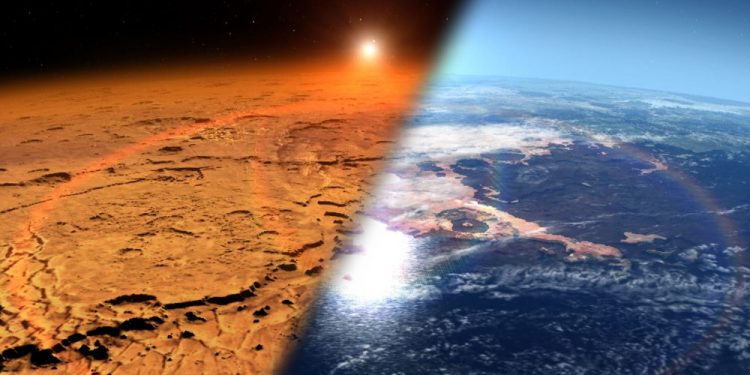We call Mars the red planet. However, Mars used to be blue and covered with water, leading us closer to discovering if life ever existed there. There is no doubt that water existed on Mars, but just how much water might have existed is still being debated. According to new research from the University of Copenhagen, there was enough water on the red planet 4.5 billion years ago to cover the entire planet in a 300-meter-deep ocean. During this time, Mars was bombarded by ice-filled asteroids. This occurred during the planet’s first 100 million years of evolution. Prof. Martin Bizzarro from the Centre for Star and Planet Formation notes that asteroids also carried organic molecules critical to life. Ice asteroids provided the Red Planet with water and biologically relevant molecules such as amino acids.
A vast ocean
DNA and RNA form bases from amino acids that contain all the necessary components for cells to function. New research indicates that the ocean covering the entire planet was at least 300 meters deep. Their depth may have reached one kilometer. Martin Bizzarro explains that the Earth has very little water in comparison. This occurred within the first 100 million years of Mars’ existence. Life on Earth experienced a catastrophic event after this period. According to some theories, Earth collided with another planet about the size of Mars. During this collision, all life on Earth was wiped out, which led to the formation of the Earth-Moon system. In other words, Mars was very likely to have harbored life long before the Earth did, according to scientific evidence.
An ancient piece of Martian crust
In order to investigate Mars’ past history, researchers have used a meteorite billions of years old. Originally part of Mars’ crust, the meteorite provides a unique insight into the formation of the solar system. Because Mars’s surface doesn’t move, the secret is hidden in the way the planet’s surface was created – which once included the meteorite. The opposite is true on Earth. Planetary tectonic plates are perpetually in motion and re-cycled. During the first 500 million years of our planet’s history, plate tectonics erased all signs of what happened. In our planet’s interior, the plates are continually moving, being recycled, and being destroyed. A plate tectonic system does not exist on Mars, however. In other words, the surface of the red planet preserves evidence of Mars’ early history, according to professor Bizzarro.
Have something to add? Visit Curiosmos on Facebook. Join the discussion in our mobile Telegram group.











